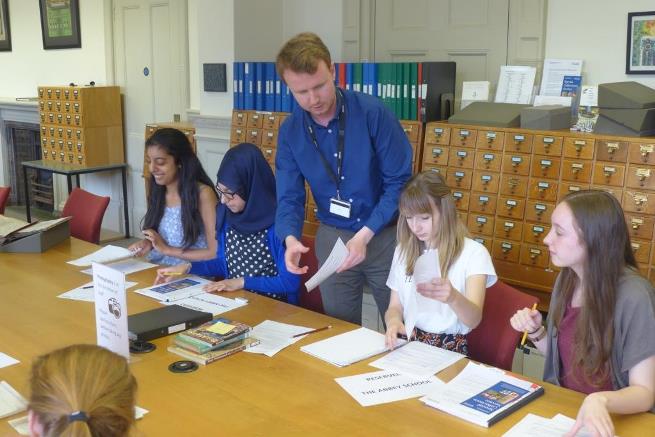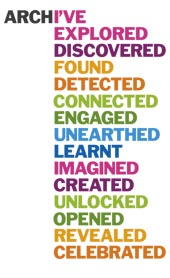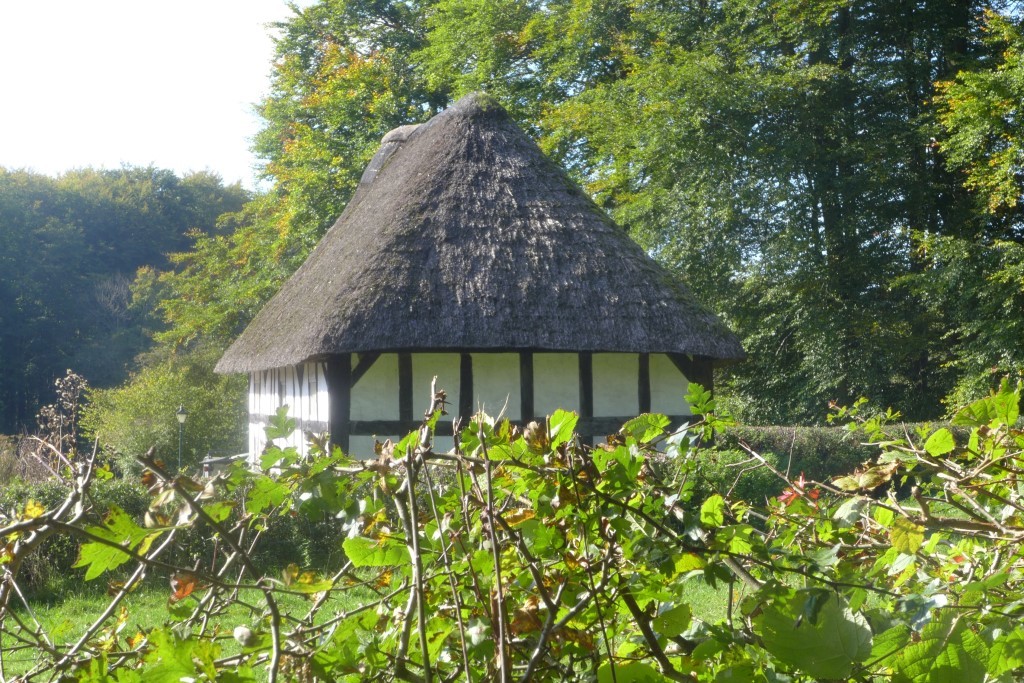Audience Development Manager, Phillippa Heath, introduces a project in which local school students discovered how archives can be used to research fascinating lives.
As part of the Museum of English Rural Life’s redevelopment, we are keen to reveal the hidden stories behind our collections. Over the Summer we were fortunate to welcome sixth form History students from The Abbey School to MERL on a two week placement. Working in groups, the students were set the challenge to explore the stories behind five fascinating women with connections to our collection. Using museum archives and objects, students researched into their lives and from this research wrote blogs which we are delighted to publish throughout this week. Our first blog written by the students presents the story of Emily Eavis.

Glastonbury, do you want to know what’s behind it? Or should I say who?
Emily Eavis is the daughter of the founder of the famous Glastonbury festival. She has lived on the working farm which has been in her family for six generations and even to this day has 500 friesian cows, so please don’t drop your litter! Her early life consisted of living on her farm and attending Wells Cathedral school – I bet she did well there! Later on she went to Goldsmiths college, then worked with Oxfam and Greenpeace doing various charitable work before training to become a teacher.
When she was younger, she had a love- hate relationship with the festival. Emily herself said “I couldn’t understand why so many people were in our garden. It was like an invasion” and in 1990, when she was 10 “a row of people were hurrying towards the window with telegraph poles that were on fire. It was horrific.” However, now she is older she loves working creatively with the festival especially “the frilly bits […] It’s exciting. It’s the best bit.” Evidence of this is also present in Park Stage which she has curated since 2008 which has seen performances from artists such as Adele, Biffy Clyro and The xx.
She dropped out of her teaching training course to care for her sick mother (who she believed was the backbone of the festival), who died in 1999. To commemorate her death she threw herself into the festival with her father which began two months later, ensuring that she maintained the legacy her mother created. Since then she has not left and is more involved than ever and to this day she is the co-organiser of Glastonbury. Her charitable roots still shine through; in 2007 she donated 2million to various charities including Oxfam, Greenpeace and Wateraid along with local hospitals and schools and this to her “makes [the festival] worthwhile”.
Glastonbury has changed significantly since Emily Eavis’ early years. The festival attracts 150,000 people nowadays but in her time there was only 100’s of people. Furthermore, the acts have changed, security has increased and it is as eco-friendly as ever. There is still some hostility towards Emily; who was sent death threats following the booking of Kanye West.
The festival is very much a family affair. Emily Eavis grew up in a farmhouse and now lives there with her husband and two sons, George and Noah. FUN FACT: George was born just weeks before the festival in 2010. She wants her children to have the same upbringing she had, saying “maybe one day it will be George living with his family in the farmhouse.”










